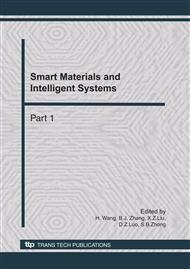[1]
P. Smets: The combination of evidence in the transferable belief method. IEEE Trans. on Pattern Analysis and Machine Intelligence, Vol. 12, No. 5 (1990): 447-458.
DOI: 10.1109/34.55104
Google Scholar
[2]
R.R. Yager: On the Dempster-Schafer framework and new combination rules. Information Science, Vol. 41, No. 2(1989): 93-137.
Google Scholar
[3]
E. Lefevre, O. Colot, P. Vannoorenberghe: Belief function combination and conflict management. Information Fusion, Vol. 3, No. 3(2002): 149-162.
DOI: 10.1016/s1566-2535(02)00053-2
Google Scholar
[4]
Q. Sun, X.Q. Ye, W.K. Gu: A new combination rules of evidence theory. Acta Electronica Sinica, Vol. 28, No. 8(2000): 117-119(in Chinese).
Google Scholar
[5]
D. Dubois, H. Prade: Representation and combination of uncertainty with belief functions and possibility measures. Computational Intelligence, Vol. 4(1998): 244-264.
DOI: 10.1111/j.1467-8640.1988.tb00279.x
Google Scholar
[6]
C.K. Murphy: Combining belief function when evidence conflicts. Decision Support System, Vol. 29, No. 2(2000): 1-9.
Google Scholar
[7]
R. Haenni: Comments on about the belief function combination and the conflict management problem. Information Fusion, Vol. 3No. 4(2002): 237-239.
Google Scholar
[8]
Y. Deng, W.K. Shi, Z.F. Zhu: Efficient combination approach of conflict evidence. Journal of Infrared and Millimeter Waves, Vol. 23, No. 1(2004): 27-32(in Chinese).
Google Scholar
[9]
A.L. Jousselme, D. Grenier, E. Bosse: A new distance between two bodies of evidence. Information Fusion. Vol. 2, No. 1(2001): 91-101.
DOI: 10.1016/s1566-2535(01)00026-4
Google Scholar


